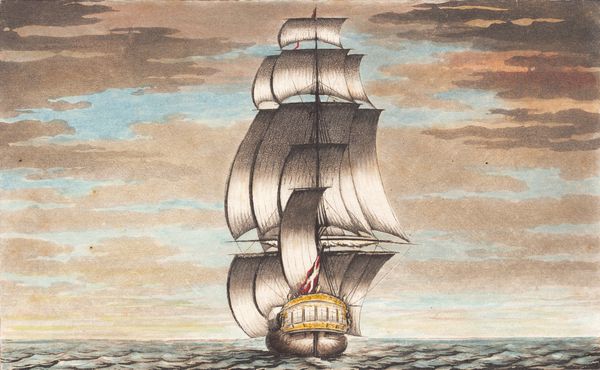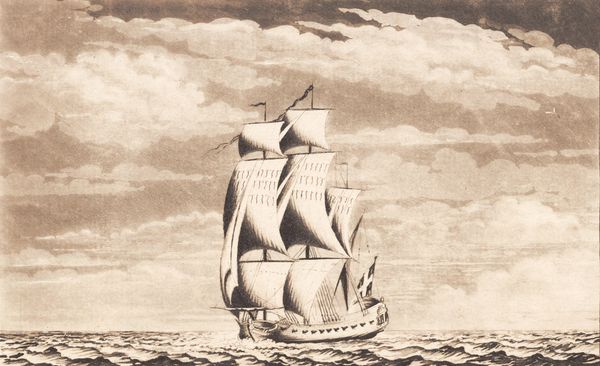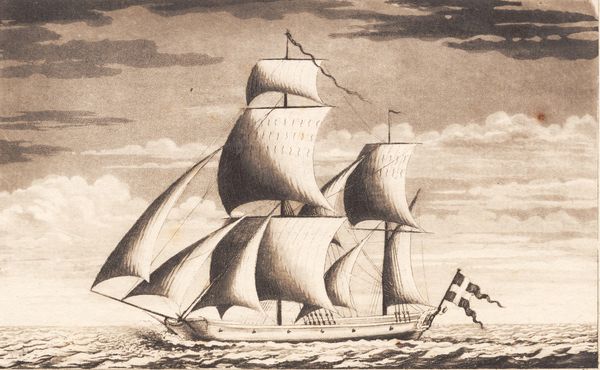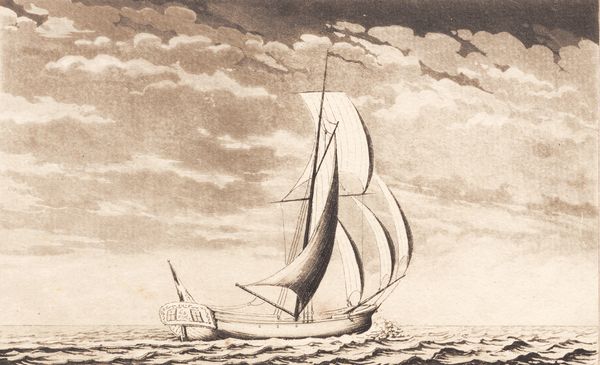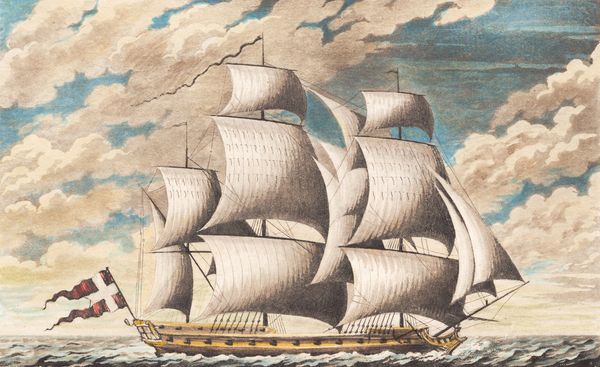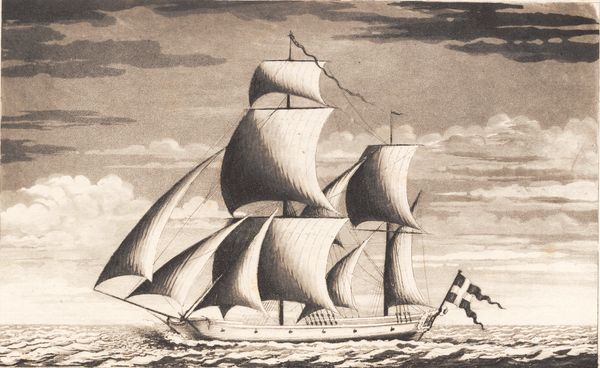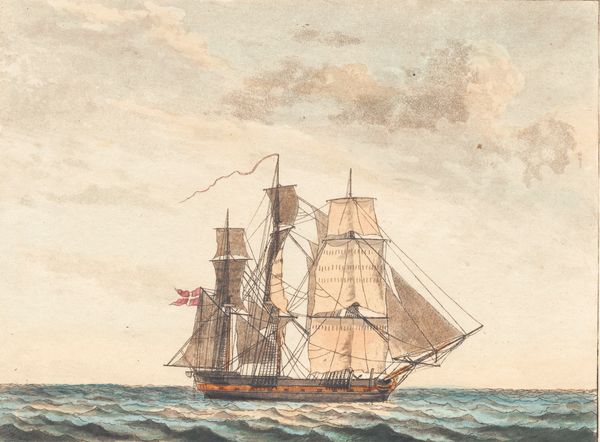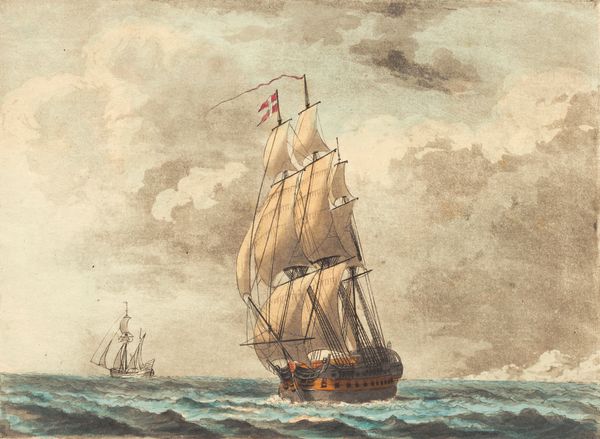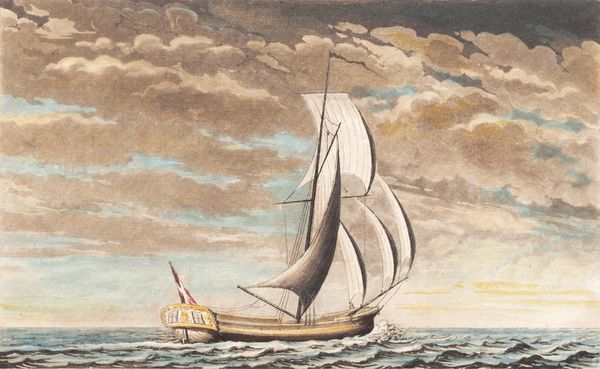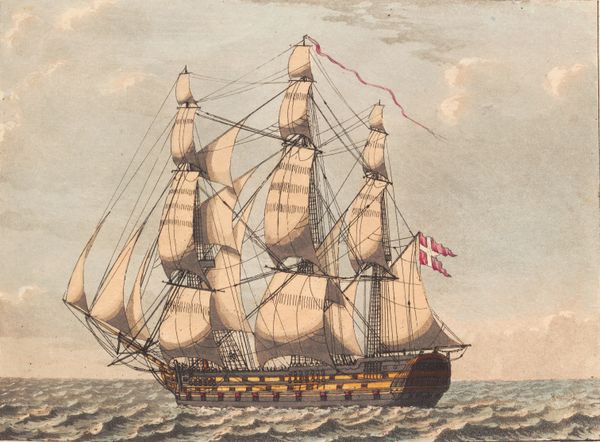
Dimensions: 136 mm (height) x 194 mm (width) (bladmaal), 116 mm (height) x 171 mm (width) (plademaal), 95 mm (height) x 154 mm (width) (billedmaal)
Editor: This is J.F. Clemens' "Suite af skibe. Fregat," made sometime between 1748 and 1831. It's an aquatint engraving of a ship, and I’m struck by the level of detail achieved with such a seemingly simple medium. What can you tell me about this piece? Curator: Well, looking at the aquatint, one immediately sees the meticulous labor involved. Aquatint, unlike simpler etching methods, requires careful attention to the tonal gradations achieved through acid baths and resin application. But beyond the artist's labor, I consider where the materials came from: The copper for the plate, the resin, the paper. What class benefited from all this effort? Editor: That’s a perspective I hadn’t fully considered. It highlights the material circumstances and economic underpinnings of art production. Curator: Precisely. Consider also the subject matter. This is not just any ship; it's a frigate. A warship. Reflecting on the cultural meaning during that period, does the image romanticize naval power? Who was in power? Who did it affect? Was this intended for mass consumption, or for an elite patron? Editor: It prompts questions about maritime trade, colonial power, and perhaps the less romantic reality of life at sea. I'm used to thinking of technique first, before diving into cultural relevance, it is important to bring this materialist viewpoint! Curator: Absolutely. The visual pleasure of the image should not overshadow its connection to a network of resources and social dynamics that produced it. It challenges a traditional, more detached viewing experience. Editor: I will certainly keep that in mind going forward! Thank you! Curator: A pleasure. I look forward to hearing your ideas evolve.
Comments
No comments
Be the first to comment and join the conversation on the ultimate creative platform.
